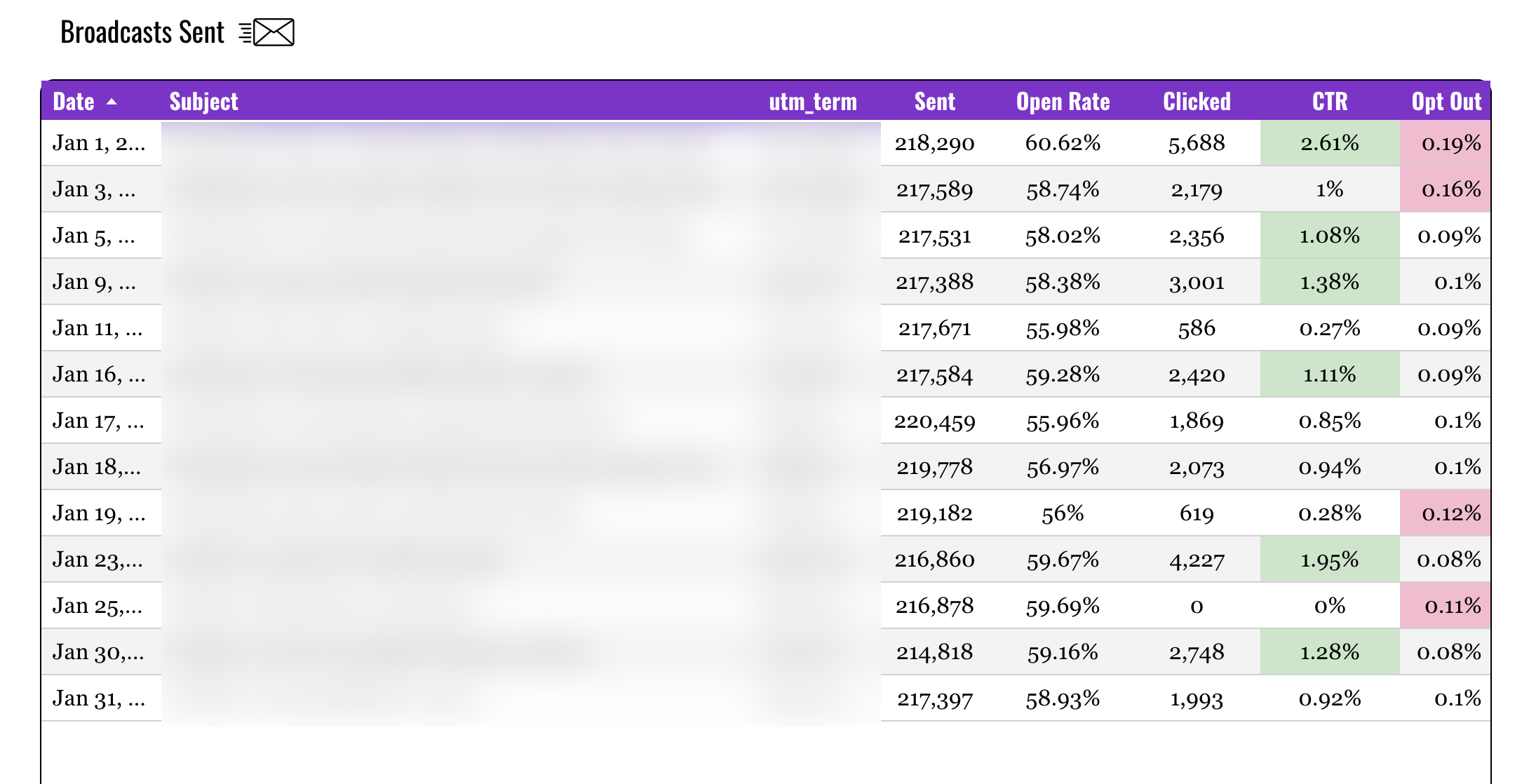Ever since Apple introduced Mail Privacy Protection, accurately tracking email performance has become more challenging. However, there’s still a simple way to check your email performance and determine if you need to dig deeper. If you do need to investigate further, EmailSmart has a suite of free and inexpensive assessment apps that can provide tremendous insights to see exactly what’s happening with your email list.
The Simplest Indicator of Potential Email Issues - Open Rates

Contrary to popular belief, open rates aren’t a completely useless metric these days, you just need to understand what they mean and how to interpret them.
For example an open rate of 50% no longer means 50% of people are opening your email.
Up to 70% of opens are now due to Apple’s MPP. Based on this the “true” open rate for a reported open rate of 50% could be anywhere between 15-50% (70% of 50 = 35, meaning we don’t know how many of those 35 were “true” Vs “false” opens).
Apple released MPP as part of iOS15 (September 2021). Adoption of MPP was initially tied to people updating their operating system. As of July 2024 it’s been reported less than 4% of Apple Devices are still using an operating system earlier than iOS15. Meaning although open rates are not a precise measurement, the volume of users using MPP is stable and therefore trends are a reliable measure. For example, if the open rate for one email is 50%, and the next is 60%, you can be confident more people opened the 2nd email, you just don’t know by precisely how many.
GREAT NEWS: Open Rates are almost totally within your control.
How?
The 3 most important factors for getting people to open your emails are:
- 1Your email arrives in the Inbox by having a good email reputation
- 2People recognize you as the sender
- 3They’re interested in your subject line (closely followed by the preview text)
So what is a good open rate? (post Apple MPP)
Here are benchmarks so you can see how your email program is performing…
Tips for Checking Open Rates
- If you send a regular broadcast or newsletter use those open rates to check performance
- Look at the average rather a single email
- Ignore emails sent to contacts who’ve been on your list for less than 30-days. People who just joined your list are typically more engaged than the average contact. (We’ll cover open rates for new leads in another post)
CASE STUDY
Here’s some stats for a newsletters sent during a month.

Subject line and utm-term have been blurred to protect client confidentiality.
Their open rate ranges from a high of 60.62% to a low of 55.98%. If we add up all the open rates and calculate the average we ended up with 58.28%
Comparing the average to the benchmarks this puts them in the upper end of “Average” and almost into “Great performance”.
Based on this my next step would be to conduct further investigation, starting with the EmailSmart Score, because even though they are doing ok, knowledge is power and without taking a look, they may never know they could be doing even better.
Curious to know how your open rates compare?
Try this exercise on your own list and compare your average to the benchmarks. If your number isn’t where you would like it to be, I encourage you to take a deeper dive and discover what’s really happening with your email list.
Next Steps:
If your business could benefit from Email List Optimization but you prefer an expert to guide you through the entire process, saving you time and effort, go ahead and schedule a call and let's see how we can help you get better email results.
If you’ve missed any of the EMAIL LIST OPTIMIZATION series, here’s where you can catch up:
